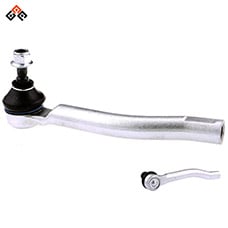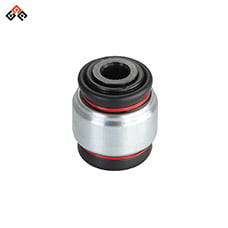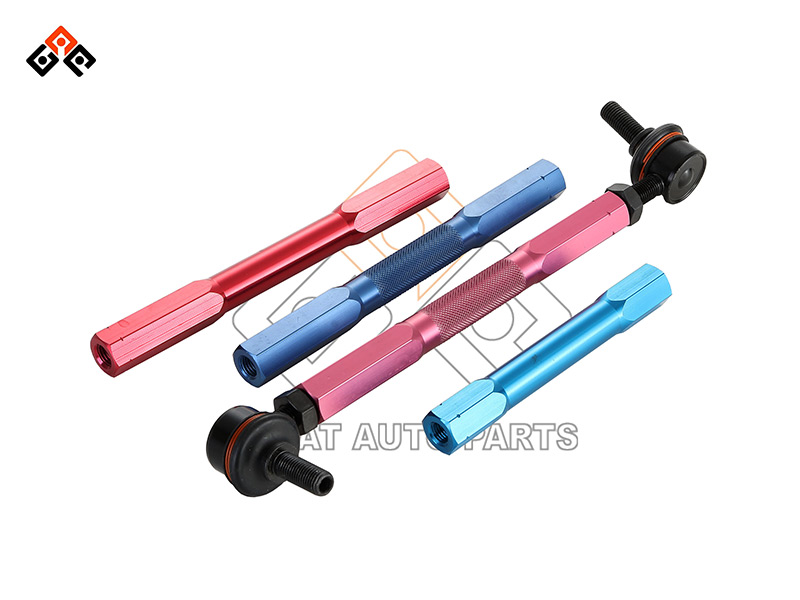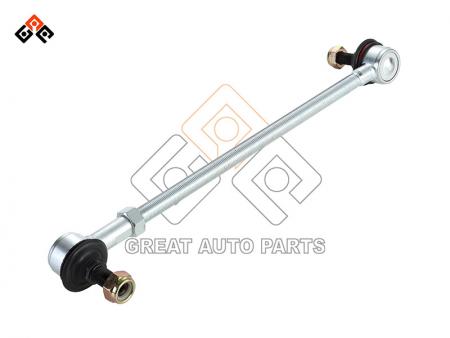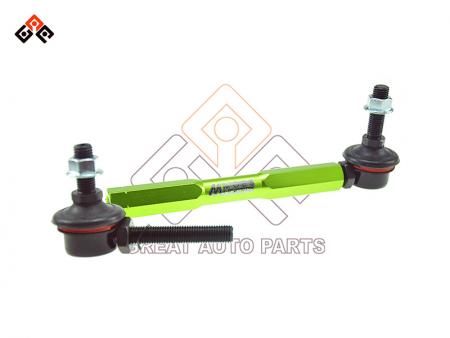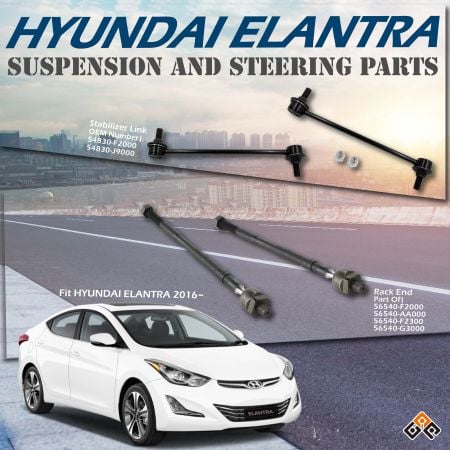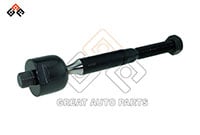Adjustable Stabilizer Links
Eliminate Clunking Noises with Adjustable Stabilizer Links
Are you experiencing issues with vehicle stability, excessive body roll, or clunking noises when making turns? These problems could be signs that your sway/stabilizer bar links are worn or inadequate. At Great Auto Parts, we offer top-quality adjustable stabilizer links designed to enhance your vehicle's performance and safety. Our innovative sway/stabilizer bar links provide precise handling and stability, giving you confidence and control on the road. Read on to learn more about adjustable stabilizer links, their functions, benefits, and why they are essential for your vehicle.
Sway Bar Links and Stabilizer Links
Sway bar links and stabilizer links are terms that refer to the same component in a vehicle's suspension system. They connect the sway bar, also known as the stabilizer bar, to the vehicle's suspension. This connection helps reduce body roll and maintain stability when the vehicle is cornering or driving over uneven terrain. By minimizing lateral movement, sway/stabilizer bar links ensure that the tires stay in contact with the road, providing improved handling and safety.
The Role of Sway/Stabilizer Bar Links in Vehicle
Sway/stabilizer bar links are crucial for maintaining vehicle stability and control. They transfer force from one side of the vehicle to the other, counteracting the body's natural tendency to lean during turns. This action helps keep the vehicle balanced and level, reducing the risk of rollover and improving overall safety. Properly functioning sway bar links enhance steering response and provide a smoother, more comfortable ride.
Exploring Different Types of Sway Bar Links
Sway bar links come in various types to accommodate different vehicle needs. The most common types include hitch sway/stabilizer bar links and adjustable sway/stabilizer bar links.
- Hitch Sway/Stabilizer Bar Links: These links are typically used in towing applications to prevent trailer sway. They are fixed in length and designed to provide additional stability when towing heavy loads.
- Adjustable Sway/Stabilizer Bar Links: These links allow for precise adjustments to the suspension setup, providing improved handling and performance. Adjustable links are ideal for vehicles with modified suspensions or those that experience varying loads, as they can be tailored to specific driving conditions.
Differences Between Hitch and Adjustable Sway/Stabilizer Bar Links
The primary difference between hitch sway/stabilizer bar links and adjustable sway/stabilizer bar links lies in their functionality and application.
- Hitch Sway/Stabilizer Bar Links: Fixed-length design, primarily used for towing stability.
- Adjustable Sway/Stabilizer Bar Links: Allows for customizable length, offering flexibility and enhanced performance for various driving conditions.
Functions and Benefits of Adjustable Sway/Stabilizer Bar Links
Adjustable sway/stabilizer bar links offer several advantages over standard fixed-length links, including:
- Enhanced Handling: The ability to fine-tune the suspension setup improves steering response and overall vehicle handling.
- Increased Stability: Adjustable links reduce body roll, providing better control and stability during turns.
- Versatility: Suitable for various driving conditions and vehicle modifications, ensuring optimal performance.
- Customizable Setup: Allows for personalized suspension settings, catering to specific driving preferences and needs
Recognizing Symptoms of Worn Adjustable Sway/Stabilizer Bar Links
Worn or damaged sway/stabilizer bar links can lead to several issues, affecting your vehicle's performance and safety:
- Clunking Noises: Unusual sounds from the suspension, especially when driving over bumps or making turns.
- Excessive Body Roll: Increased body lean during cornering, compromising vehicle stability.
- Poor Steering Response: Difficulty maintaining control or experiencing loose steering.
- Uneven Tire Wear: Abnormal tire wear patterns due to imbalanced suspension forces.
If you notice any of these symptoms, it may be time to inspect and replace your sway/stabilizer bar links.
Knowing When to Replace Sway/Stabilizer Bar Links
Regular inspection of your vehicle's suspension system can help identify worn or damaged sway/stabilizer bar links. Here are some signs that indicate it's time for a replacement:
- Visible Wear or Damage: Cracks, bends, or corrosion on the sway/stabilizer bar links.
- Loose or Worn Bushings: Signs of deterioration in the rubber bushings connecting the sway bar links.
- Excessive Movement: Excessive play or movement in the sway/stabilizer bar links when manually checked.
Features of Our Adjustable Stabilizer Links
Our adjustable stabilizer links are engineered to deliver superior performance and durability. Key features include:
- Adjustable Range: From 55 mm to 320 mm, allowing for precise suspension tuning.
- Aluminum Tube Design: Anode surface treatment for the best anti-rust protection.
- Superior Strength: Longer durability compared to competitors.
- Large Swing Angles: Up to 60 degrees for enhanced flexibility.
- Quality Assurance: Laser-etched tracking batch codes for quality control.
- Optimal Strength: Pull or push-out strength is equal to or higher than OE standards.
- Customizable Length and Direction: Adjustable overall length and ball joint direction for perfect installation without fitting issues.
Installation Tips for Adjustable Sway/Stabilizer Bar Links
When installing adjustable sway/stabilizer bar links, consider the following tips to ensure optimal performance:
- Proper Torque: Ensure that all nuts and bolts are tightened to the manufacturer's recommended torque specifications.
- Adjustable Length: Set the adjustable links to the correct length for your vehicle's suspension setup.
- Check for Clearance: Verify that there is adequate clearance between the sway bar links and other suspension components to prevent interference.
Maintenance Tips for Long-Lasting Performance
To ensure long-lasting performance and reliability from your adjustable sway/stabilizer bar links, follow these maintenance tips:
- Regular Inspections: Periodically check the links for signs of wear or damage and replace them as needed.
- Lubrication: Keep the ball joints and bushings lubricated to reduce friction and extend the life of the components.
- Alignment Checks: Regularly inspect your vehicle's alignment to ensure that the sway bar links are functioning correctly.
Never Worry About Wobble with Adjustable Stabilizer Links
Upgrade your vehicle's performance and stability with our adjustable sway/stabilizer bar links. Designed for durability and precision, these links offer unmatched flexibility and customization options. Whether you're looking to enhance handling or reduce body roll, our adjustable stabilizer links provide the ideal solution
- Gallery

